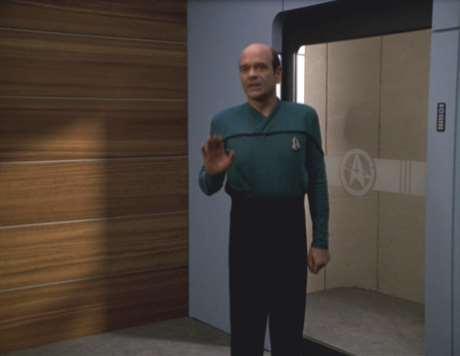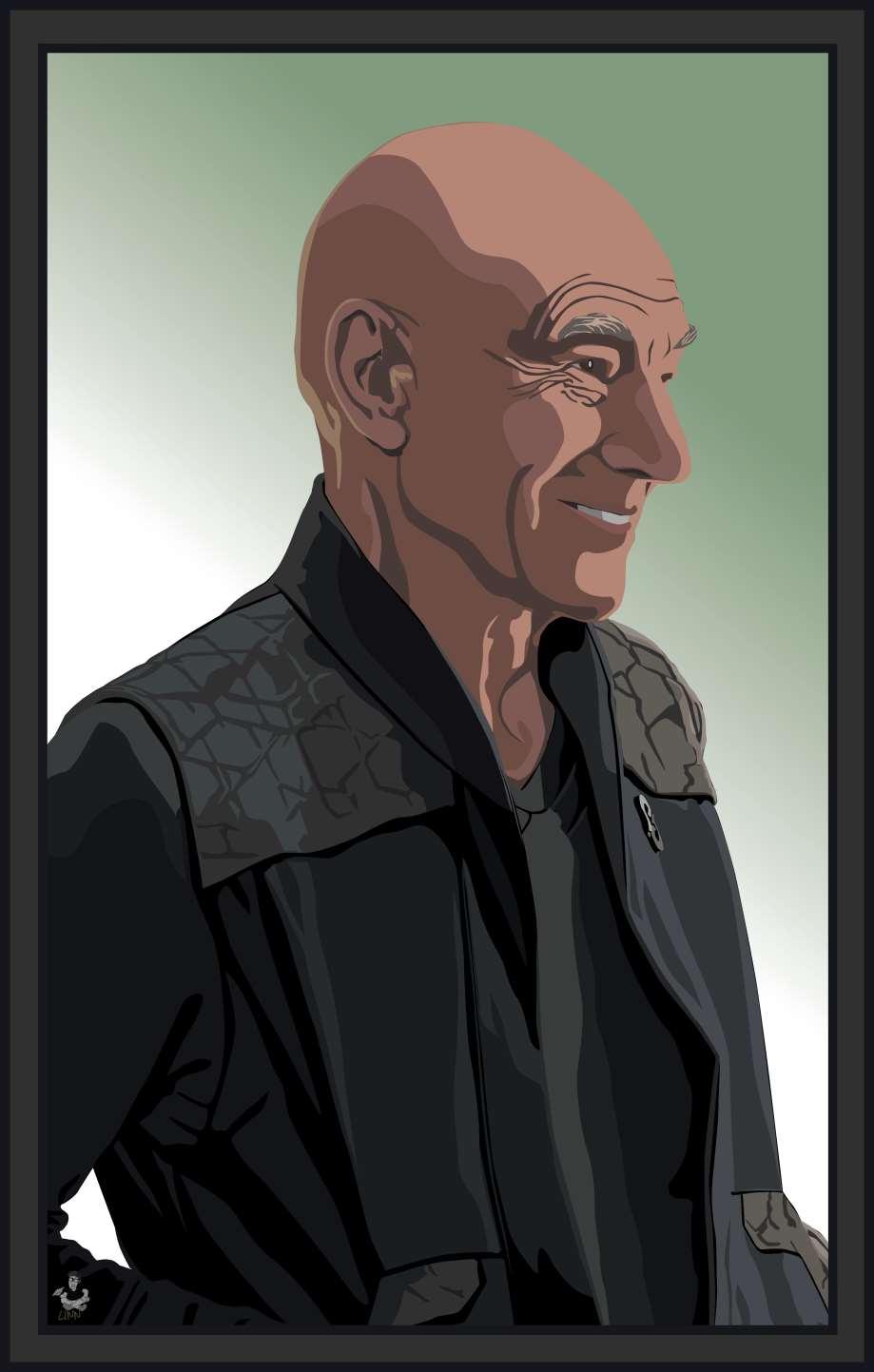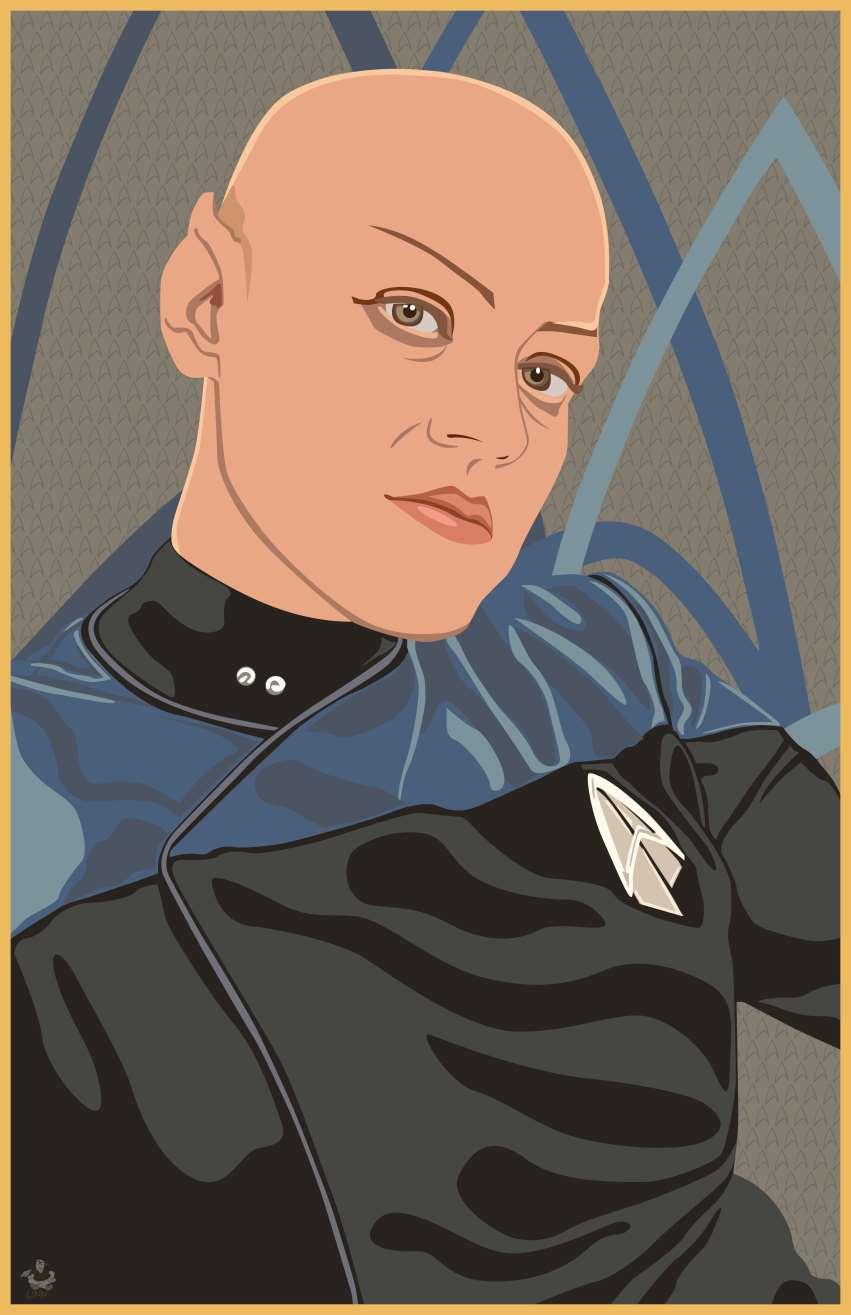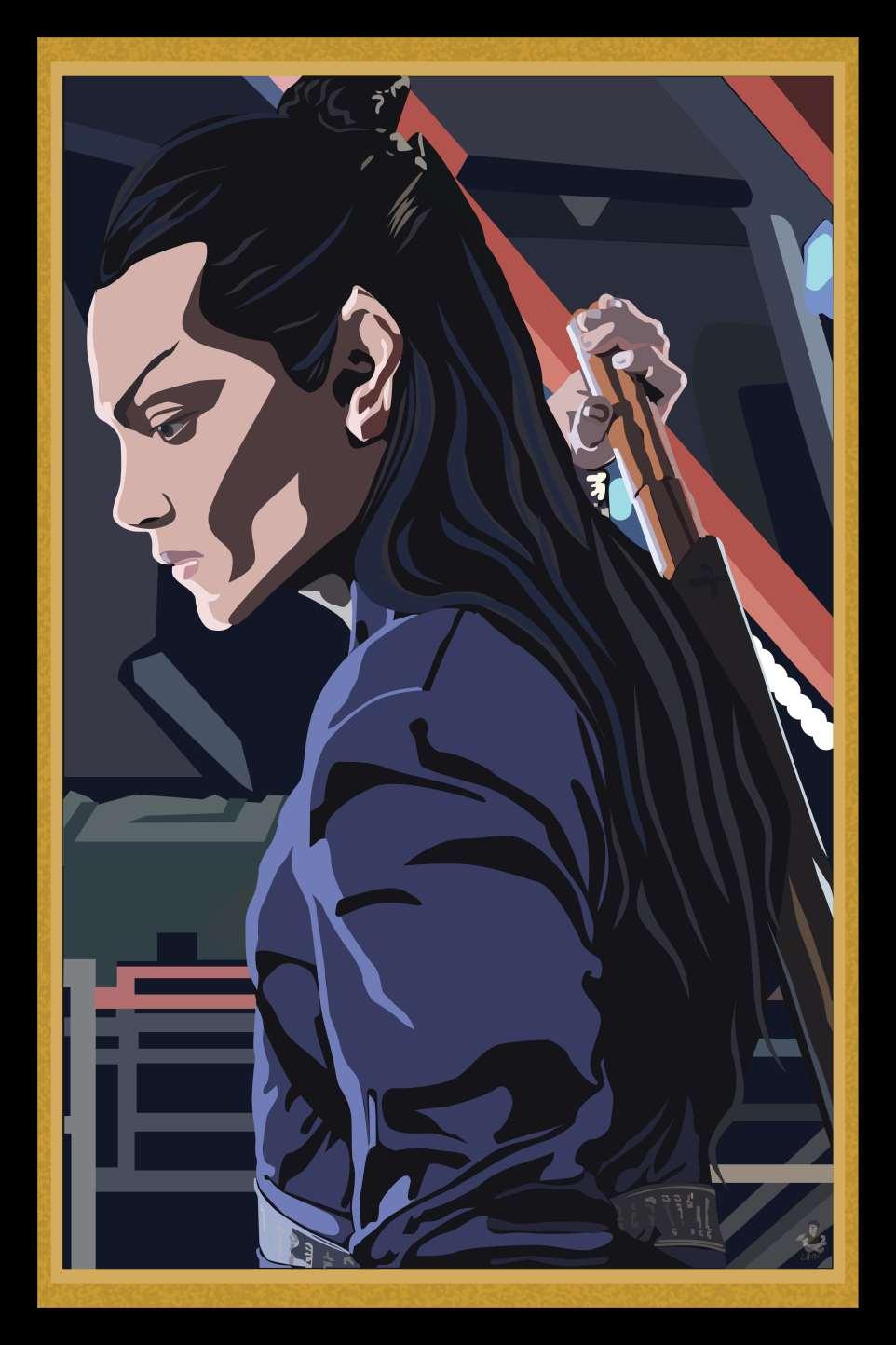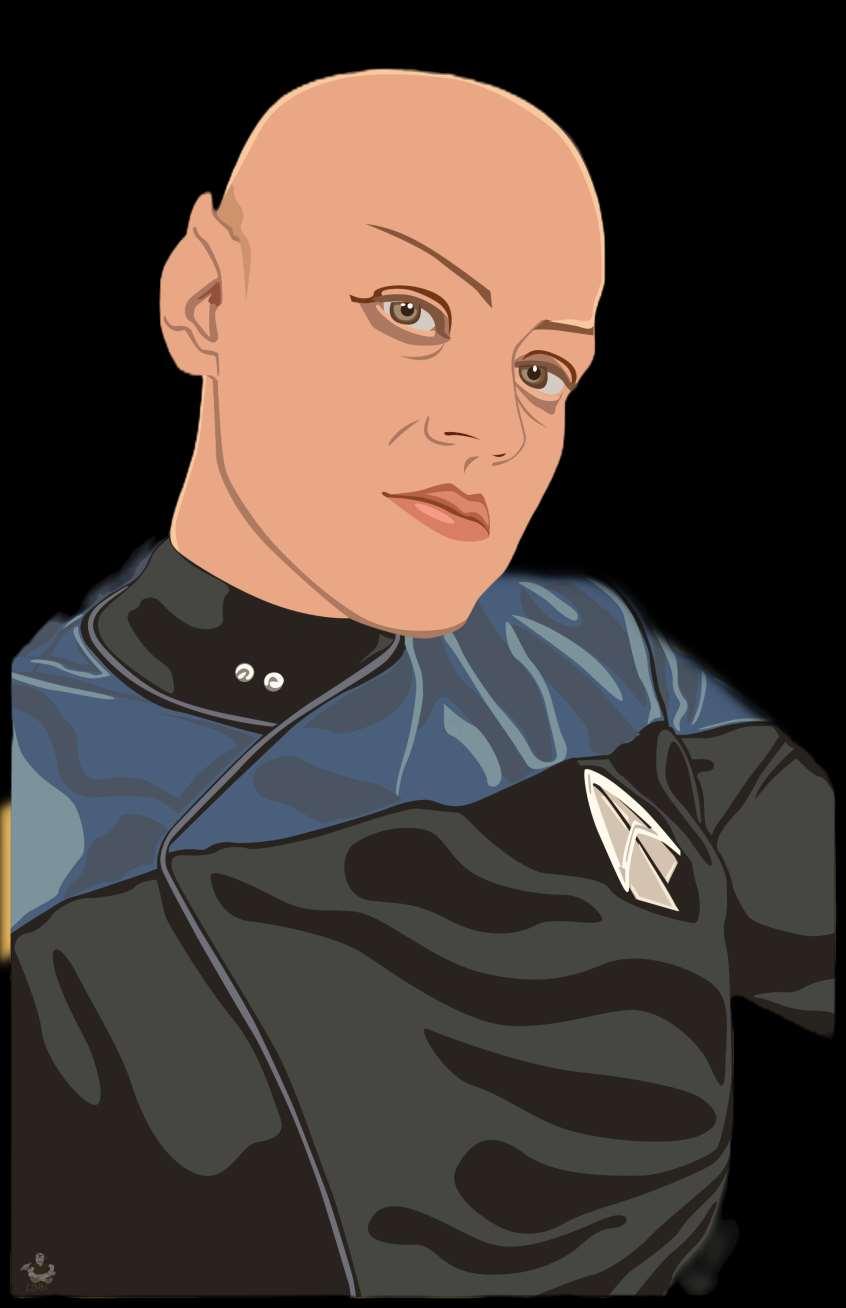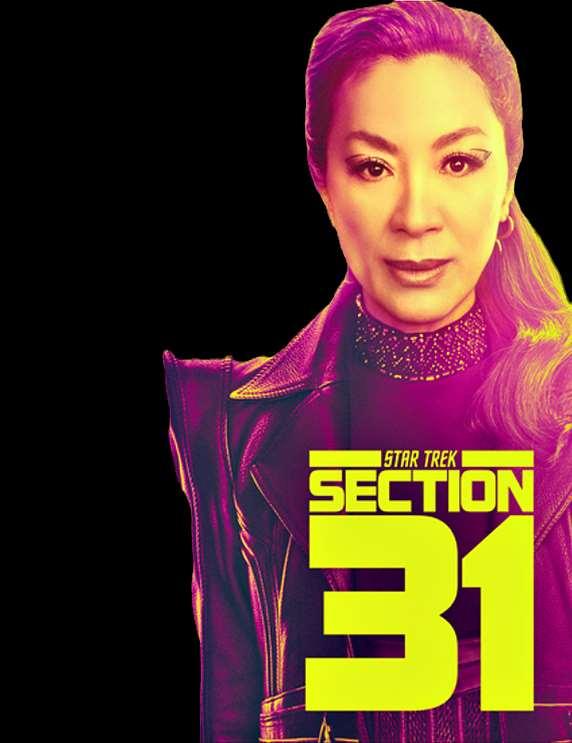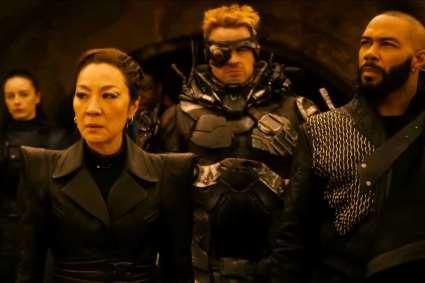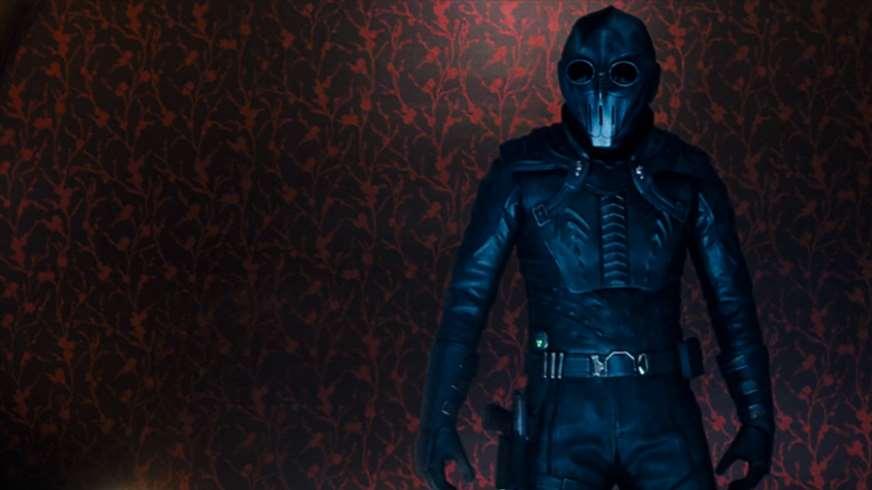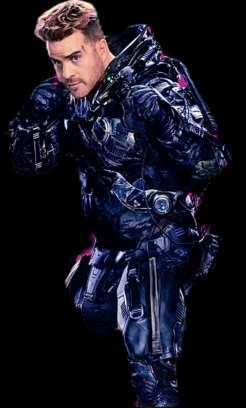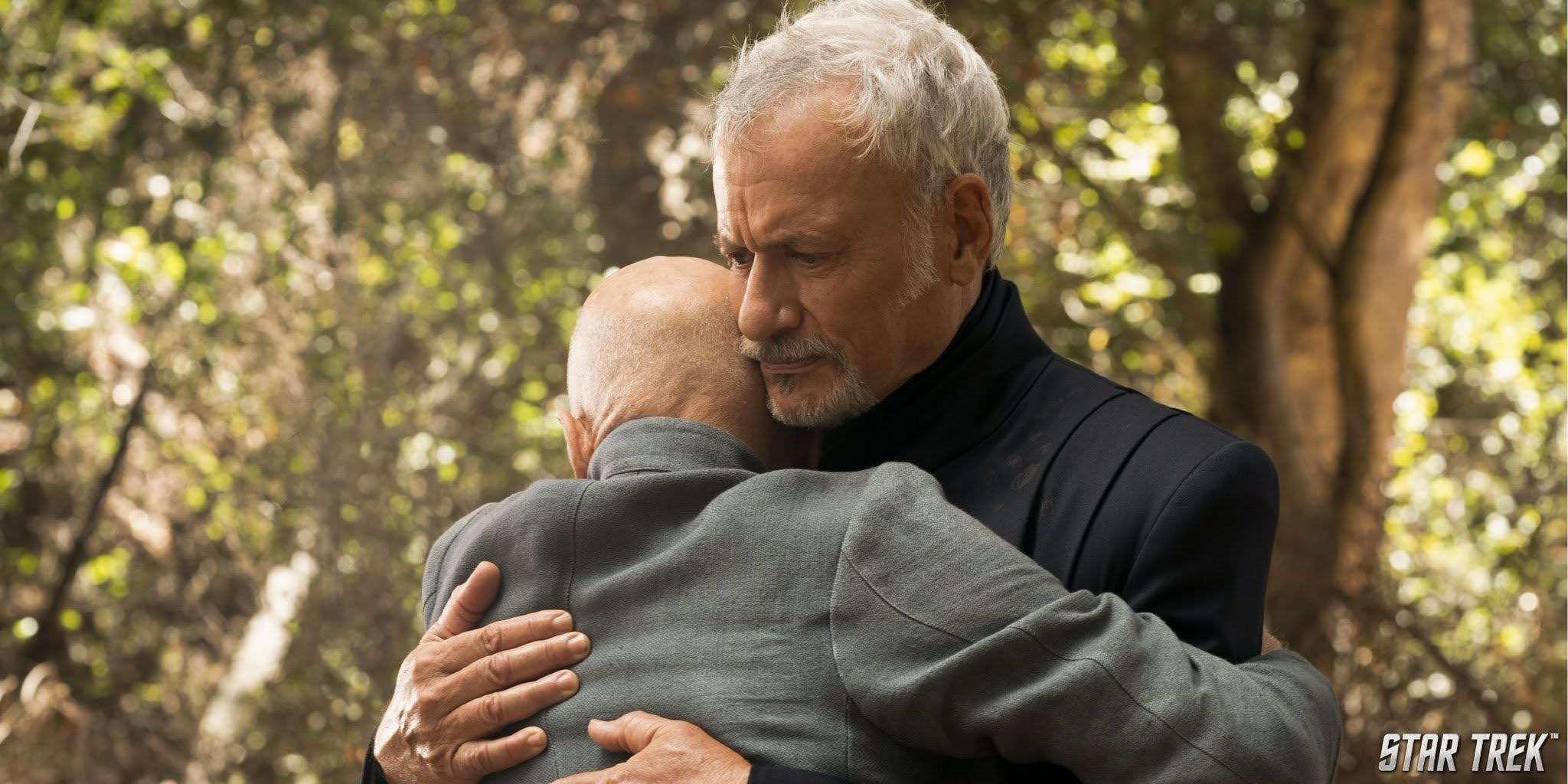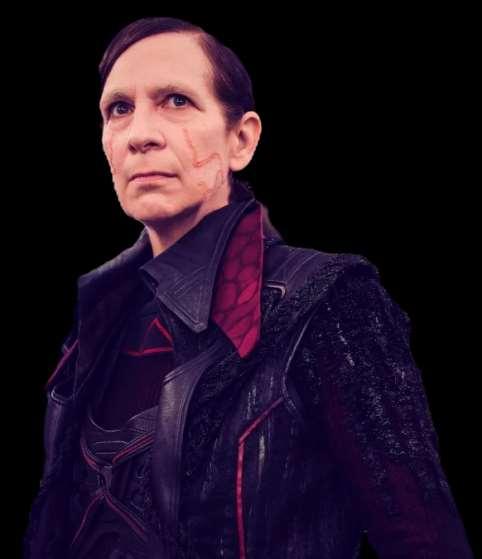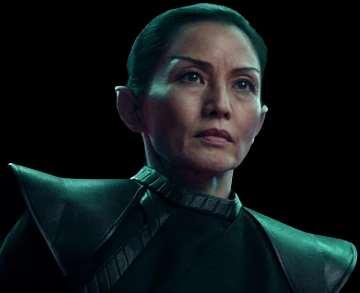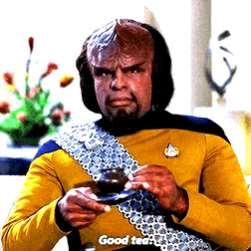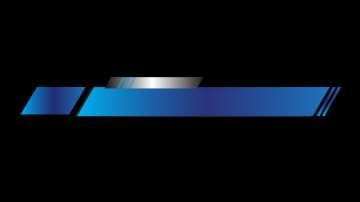






























This is our exciting second issue, a Star Trek: Picard theme! If you are like me, I thoroughly enjoyed all three seasons of this show, and I enjoyed seeing Jean -Luc back in action. Some folks liked some of it, but not all of it. That’s OK. This issue will show a little love for all the things we did love about the show. I grew up with Picard as a quasi-father figure. He was super important to me, and I learned many lessons from him about leadership, being a good mentor, teamwork and trusting those around me. I am thrilled to put out this issue, and to read some of the great material from our fellow Star Trek Family members.
On the magazine I’d truly like to express my deepest gratitude to all the folks who are helping to make this happen. The writers, editors, fan artists and interviewers… Everyone who has had a hand in working on this magazine THANK YOU! You have truly shown your passion for Star Trek, and for the ST Family as a community, by sharing your talents. The magazine’s Premiere Issue (January 2025) was a HUGE hit and success, and all of that credit goes to you.
My goal as the Founder of the Star Trek Family is to continue to bring great events and features to my fellow Trek community, and the magazine is an extension of that. If you are reading these issues and thinking “man, it would be fun to get involved and write,” or “I want to show off my art and creativity,” please get in touch with us! We’d love to share in your passion for Star Trek also!
Mark Sickle Founder & Host Star Trek Family

We are truly interested in receiving feedback from our readers and fellow fans! Really love an article that appears in our magazine? Truly disagree with someone’s take on a topic? How are we doing? Do you have suggestions for features, articles, etc.?
Please reach out to us! Click the button at left to send us an email. CONTACT US
“Star Trek and all related marks, logos and characters are solely owned by CBS Studios Inc. This fan production is not endorsed by, sponsored by, nor affiliated with CBS, Paramount Pictures, or any other Star Trek franchise, and is a noncommercial fan-made e-zine intended for entertainment use only. No commercial exhibition or distribution is permitted. No alleged independent rights will be asserted against CBS or Paramount Pictures.”































I remember the first time I saw her. She was beautiful. She captivated my young imagination like nothing I had ever seen before. At 7 o’clock on a Saturday night in 1987, the Enterprise-D filled my television screen in all of her splendor and promised adventure and exploration. As that newly redesigned and updated version of the Enterprise launched from space dock, something happened inside of me that would shape my life for years to come.
That was the night I became a Trekkie. Star Trek: The Next Generation would continue to light my imagination for seven more years on television and on the big screen with four films. I became a man while watching Star Trek. I learned about life, in part, because of how I was influenced by Star Trek.
Now, it wasn’t the only influence or inspiration in my life, but it was definitely a part of my upbringing. Watching this crew interact with each other and with alien civilizations really did affect me as a teenager and into my young adult years.
One of the biggest reasons this show impacted my life was the leadership of Captain Jean-Luc Picard. Before I go any further, I’d like to clarify that I realize this is just a television show and is the fantasy of a highly inspired Gene Roddenberry. Nevertheless, art and science fiction, in their highest forms, often reveal things about reality in a way that helps us understand better our current situations. TNG did just that for my younger self and continues to
aid and assist me in different ways now that I’m older and, I hope, more mature and wiser.
Captain Picard was just different from James T. Kirk. As a kid, I spent many hours watching the original series with my dad, and I loved it! But I wouldn’t have called myself a Trekkie until I was introduced to the Frenchman, or was he British? Not sure the writers could make up their minds that first season! Whatever the case, Captain Picard was my captain for the foreseeable future from that very first “Encounter at Farpoint.”
He was a different kind of captain from Kirk, and I’m sure that was intentional. We didn’t see as many fistfights with Captain Picard as we saw with Captain Kirk. He didn’t fall in love nearly as often as Kirk did. At the very least, he wasn’t kissing every other beautiful alien as we often joked that Kirkdid! Picard was different.
Picard was the diplomat who preferred to talk out the problem. I personally think that Kirk doesn’t get enough attention for how much he did try to work things out diplomatically. It was just that those Klingons and Romulans always fired first! He wasn’t always given the opportunity to talk it out as much as Picard.
The creators and writers of TNG did a fantastic job of building a character who could reflect modern ideals with a charisma and class all his own. Of course, there was no one better suited to playing this role than Patrick Stewart. That bald head! That British accent they tried to make French! That strong demeanor and quiet confidence and assurance in himself! These things were also a part of Kirk’s persona, but Picard seemed more polished and humble. My theory is that the era of which each of them found themselves a part probably

Eventually, I found myself wanting to watch more TNG than The Original Series. Captain Picard had a lot to do with that. I saw in my captain the person I really wanted to be deep down inside. Don’t get me wrong, I never imagined myself as bald, but I wanted to be calm. I wanted to be sure of myself. I wanted to know how to handle adversity. I wanted to lead others through adversity.

I learned a lot about leadership through this amazing fictional character. Picard listened well to his crew and his team of senior officers. One of the most powerful tools of communication is actually listening. A good leader, and a good human being, learns how to listen well. The power of listening opens the door for great-
how they are feeling and what they are experiencing without interruption, it brings to them an assurance that I care about how they feel and what they need. Most of the time, Picard did that brilliantly.
In fact, it’s one of Picard’s character traits that I love the most! He was humble and wise enough to listen and care, but he also knew when and how to make the tough decisions. He was also honest. Honesty is really important when it comes to building trust, and we see his honesty most powerfully played out in the film Insurrection, as he refuses to turn a blind eye to the immoral removal of the Baku people from their home planet.
Picard always stood up for what was right, honorable, and just. He always stood up for his crew. We saw this right from the start as he was faced with a seemingly insurmountable foe in Q. Picard was forced to defend the actions of the human race against an all-powerful being of almost supernatural power. From this
first episode, we witnessed Picard defending what he loves: a sense of humanity that, while still imperfect, was trying to grow and evolve into something better.
The capacity to grow and help others in their own journeys
“We witnessed Picard defending what he loves: a sense of humanity that, while still imperfect, was trying to grow and evolve into something better.”
of growth is something I learned, at least in part, from Captain Picard. I particularly loved his interactions with Ro Laren and Ensign Sito. I would also be remiss without mentioning his relation-


ship with Wesley Crusher. These interactions show the mentorship, the belief in second chances, and the willingness to let other people learn and grow while having important roles and gaining crucial experience.
Picard admitted when he made mistakes, and he gave his crew the space to make mistakes as long as they were honest about them and learned from them. He appreciated honesty as one of the highest forms of respect and honor amongst the crew.
One of the most personally formative episodes of TNG for me was the season five episode “The First Duty.” Picard gives one of his best speeches and lessons to Wesley Crusher, who is caught in the middle of a cover-up over a training accident that cost the life of a fellow Starfleet cadet. The
team was hiding the truth and Picard discovered it. Wesley ultimately did the right thing and confessed to the cover-up and the mistake. It cost him, but he realized, because of Captain Picard’s influence, that he wanted to be a different kind of human.
The hard part about telling the truth sometimes, especially when it involves admitting failure, is that the consequences don’t magically disappear when we are honest about the situation. I believe that those consequences help to remind us to make wiser choices, even if they seem harder. Honesty often costs us something, but a person of character embraces that
cost in order to respect and honor those around them. Honesty builds bridges. Dishonesty tears them down.
I believe in his heart that Wesley also knew that Captain Picard had his best interest in mind and would be there for him,


cheering him on, giving advice and counsel, etc. This is yet another thing that impressed me as a young man. A good leader doesn’t just allow others to make mistakes and then proceed to abandon them. A good leader sticks around and continues teaching and training and releasing them back into the action of life.
The power of Picard in the Trek universe is an example of a leader who listens, learns, grows, and empowers others to do the same. It is also one of perseverance. Remember the whole Borg thing? Yep, that’s perseverance. Remember the whole Q thing? Super perseverance! I know that’s not exactly great grammar, but you know what I mean!
Finally, but admittedly not exhaustively, the power of Picard, for me, most significantly rests in his ability to forgive. One of the hardest things to do in the human experience is to forgive. When someone wrongs us or hurts us,
our first instinct isn’t always to forgive. It’s to lash back out! Just look at the atmosphere in many of the social media apps we frequent. We can hardly let a single word go by us without lashing out and bringing our own form of judgement and hatred back at what we call hate and evil. And the circle is never truly broken.
There are two powerful examples of forgiveness, as far as I’m concerned, in the Picard era of the Star Trek universe. The first one might surprise you a bit, but I
think it’s an important piece of Picard’s story. One of my all-time favorite Trek episodes is the TNG season four episode “Family.” Picard, fresh off his experience of being assimilated by the Borg, rescued, and then brought back to his humanity, visits his childhood home and his brother. His brother chose to remain on earth and continue the family tradition of making wine, whereas Picard chose the stars. A very powerful and touching story reveals the angst between Picard and his brother over their life choices. Ultimately, Picard comes to grip with the atrocities he was forced to commit as Locutus of Borg. His own PTSD comes to light through a mud fight with his brother. In this powerful moment, one of Stewart’s best as an actor, the brothers begin to understand each other. They realize that they need each other and that they are not so different as they once believed.
Secondary lesson: never underestimate the power of a good mud fight! Mud fights bring people together.
Picard begins the journey,


person to forgive is yourself. My captain was horrified at the death he was forced to spew out on people he had committed to protect as a Starfleet officer. He was broken. In that brokenness he embraced forgiveness for himself.
We shy away from brokenness in our culture. It’s easy to understand why, but I wonder if brokenness can actually be the only true path towards actual healing and even redemption. Picard had to let go of the guilt and the shame before he could move on in a healthy manner. We need to learn how to forgive ourselves if we are to forgive others.
The other powerful example of the importance of Picard’s forgiveness lies in a compelling scene in the Star Trek: Picard when Picard has a moment with Q where
him for years. The ultimate forgiveness is released when we offer it to our enemy.
I remember watching this scene, tears streaming down my face, and letting out a cleansing lungful of air. This was the only right way to end the relationship between Picard and Q. Both characters recognized the good they showed each other, even if it was messy and hard to understand from time to time.
This article is named The Power of Picard. I’m calling it The Power of Forgiveness. When powerful people like our own Captain Picard forgive, there is a release of power and control that happens. This is one reason we harbor unforgiveness in our hearts towards those who have hurt us. The truth of the matter is that unforgiveness
enemy. Forgiveness doesn’t validate evil or pain or abuse in any way. It does open the door for us to be free from hate and for us to live unhindered by the actions of others.
The power of Picard is also in perseverance, and I happen to think perseverance and forgiveness go hand-in-hand. If you want to be someone who perseveres, then be someone who learns how to forgive.
Picard did.

BRIAN DONAHUE: Brian is a pastor, songwriter, aspiring author and avid podcaster hosting three different podcasts including The BIG Sci-Fi Podcast. He lives in Ohio with his wife, two kids and Data the goldendoodle.






Imagine sitting in a restaurant with your family. Everyone is talking with one another and is having a really good time. You then began feeling agitated. A tingling feeling comes across your arms. You’re rubbing both arms to get rid of the feeling. At the same time you’re frantically looking around the restaurant. Something seems off. Something doesn’t feel right. One of the lights outside is constantly flickering and your breathing begins to increase. The last time a light was flickering at you it was from the enemy. He was using a mirror signal to let his company know that you were in the line of fire. You start hyperventilating because you hear gunshots, machine guns. Grenades are constantly going off and you start to cover your ears and squeeze your eyes shut because the noise is too loud. Then, you feel a soft hand on your wrist. It feels warm to the touch. A voice says, “It’s OK. You’re safe.” You open your eyes and look up and realize that you’re still at the restaurant. Your family is looking at you. They reassure you that everything is okay. You were just having another episode.
According to the American Psychological Association, Post Traumatic Stress Disorder (PTSD), is a disorder that may result when an individual lives through or witnesses an event in which they believe that there is a threat to life or physical integrity and safety and experiences fear, terror or helplessness.
In Star Trek: Picard Season 3, we are introduced to the
character, Liam Shaw, captain of the USS Titan-A. Throughout this season, Shaw displays traits that are associated with PTSD. These are likely caused by his experiences as a Starfleet officer during the events of the Battle of Wolf 359, where he witnessed a massacre caused by the Borg. This experience helped shape Shaw into the person that we know today. Here’s how PTSD manifests in his character.
Survivor’s Guilt
“Why-why me? I’m just some dipshit from Chicago. Now, I’m lucky number 10.” Shaw acknowledges this in the episode, No Win Scenario. He’s struggling with why he lived and why so many died. His resentment toward Admiral Jean-Luc Picard, who was Locutus of Borg, and indirectly responsible, cements thisfeeling.
Triggers and Avoidance
Shaw’s harsh attitude toward Picard and Seven of Nine, and by extension, Captain William Riker, shows that he struggles to separate individuals from the trauma they symbolize. He’s sarcastic, demeaning, obsessive, and angry. This behavior is a common PTSD symptom, as he distances himself emotionally and socially from anything related to his trauma. In the episode, The Next Generation, we see signs of triggers and avoidance. For example, when Picard and Riker board the ship, Shaw is not there, just his crew. Picard introduces Riker to the Titan of Nine. But she corrects them by saying,
Hansen, sir. Captain Shaw prefers that I use Hansen, Admiral.” Having a former borg drone as his first officer is triggering. It’s a constant reminder of loss for him. When they go into the conference room, they see that Shaw has started dinner without them. His body language exhibits his uncomfortableness being in the same room with them. Writer Terry Matalas exhibits this by placing the characters in a very small, dark room. When Seven offers to help Picard and Riker, Shaw reminds her, “Hansen, your loyalty lies with this ship... not to old friends, former ex-Borg…” This quote leads to another characteristic about him.
Hypervigilance and Control
Shaw follows Starfleet protocols to the letter and has an authoritarian command style that shows hypervigilance. He is deeply concerned with maintaining control, likely because the chaos of Wolf 359 left him feeling powerless.
His mistrust of unplanned risks, especially when Picard and


need to prevent situations that might spiral out of control, reminding him of the devastation he once endured. For example, in the episode, Disengage, the Titan is outgunned compared to the Shrike. He doesn’t want to put the lives of the crew at risk just to save four people. Eventually, Seven appeals to his ego and he is able to rescue them from the Shrike.
How It Affects His Leadership
Shaw often appears cold, sarcastic, and emotionally distant. This is probably a defense mechanism to protect himself from forming connections that could lead to further emotional pain. Shaw’s PTSD complicates his lead-
ership. While his hypervigilance and adherence to protocol make him a disciplined and cautious captain, his unresolved trauma can lead to conflict with his crew, particularly when they challenge his authority or evoke his past. Despite his abrasive personality, Shaw shows vulnerability on the holodeck, where he recounts his experience at Wolf 359. This rare openness highlights the depth of his unresolved trauma and the beginning of him processing it. However, his journey in the series hints at growth and the possibility of healing as he navigates his trauma and builds trust with his crew.
Growth, Forgiveness and Healing
PTSD is a disorder that so













n the sprawling universe of Star Trek, few characters have undergone a transformation as compelling and multi-faceted as Worf, the iconic Klingon warrior portrayed by Michael Dorn. Introduced in Star Trek: The Next Generation (TNG) as the first Klingon officer in Starfleet, Worf’s character arc spans decades, multiple series and a complex evolution of identity. From the grumpy, honorbound warrior to the surprisingly calm and centered assassin, Worf’s maturity as a character is a study in personal growth, selfdiscovery and the balance between tradition and individuality.
When Worf first appeared in TNG, he was defined by his struggle to reconcile his Klingon heritage with his role as a Starfleet officer. Worf was raised by human parents after his biological Klingon family was killed in the Khitomer Massacre. Worf always felt like an outsider in both worlds.
Captain Jean-Luc Picard played a crucial role in shaping Worf’s journey, both as a Starfleet officer and as a Klingon navigating the complexities of his heritage. Picard’s unwavering respect for Worf’s cultural identity and his thoughtful mentorship helped Worf reconcile his dual allegiance to Starfleet and the Klingon Empire. Picard often challenged Worf to rise above his instinct for aggression, encouraging him to find honor not just in battle, but in diplomacy and ethical choices. By trusting Worf with significant responsibilities, such as acting as an intermediary in Klingon politi-
cal disputes, Picard demonstrated faith in his abilities and helped him grow into a more confident and balanced leader. Their relationship, built on mutual respect and understanding, highlighted how Picard’s guidance allowed Worf to embrace the duality of his identity with pride and purpose.
At this stage, though, Worf was a character of extremes: passionate, quick to anger and intensely devoted to the idea of honor. While he was capable of great loyalty and wisdom, his emotions often got the better of him.
Worf’s transfer to Deep Space 9 marked a turning point in his development. The DS9 series, known for its darker and more serialized storytelling, allowed the writers to explore Worf’s character in greater depth. Here, Worf became a more mature and introspective figure, though still burdened by the weight of Klingon tradition and his personal code.
On DS9, Worf’s relationships, particularly with Captain Benjamin Sisko and Lieutenant Commander Jadzia Dax, revealed new layers to his personality. Sisko’s mentorship played a pivotal role in shaping Worf into a more well-rounded and disciplined Starfleet officer. His time aboard the USS Enterprise had not fully prepared him for the complex, morally gray challenges of the Dominion War or life aboard a space station like DS9. He was also given more opportunities in a command role. Under Sisko’s leadership, Worf learned to navigate situations that required more than honor and









strength he grew to understand the value of diplomacy, adaptability and leadership in a volatile and unpredictable environment.
Jadzia’s humor, confidence and willingness to challenge
Worf’s rigid views softened him in ways unseen in TNG. Their romance was a key part of Worf’s journey toward emotional vulnerability. It forced him to grapple with loving someone vastly different from himself and dealing with
the pain of Jadzia’s tragic death.
Still, DS9 retained Worf’s darker edges. He was often brooding, angry and prone to violence, a man shaped by loss, war, and the burdens of his Klingon heritage.

Yet, these trials set the stage for the wiser, more centered Worf we meet in Picard.
In Picard Season 3, Worf re -emerges as a surprising, almost unrecognizable figure. The once hot-headed warrior is now calm, measured and, in his words, “a pacifist … most of the time.” He exudes a zen-like tranquility, wielding his experience and wisdom like a blade as sharp as his beloved bat’leth.
His newfound serenity reflects years of introspection and a conscious decision to grow beyond the limitations of his past. The Klingon obsession with honor and vengeance has given way to a more balanced philosophy, where he values peace but is unafraid to act decisively when necessary.
This version of Worf feels like the culmination of his arc. He has not abandoned his Klingon identity but has learned to inte-
grate it with the more-tempered, contemplative side of his personality. His humor, often dry and self -deprecating, hints at a man finally comfortable in hisown skin.
Worf’s role in Picard also highlights his enduring loyalty and sense of duty. Whether fighting alongside his old comrades or offering sage advice, Worf is a stabilizing presence, embodying the wisdom that comes with decades of experience.
The transformation from Worf’s rigid persona in TNG and DS9 to the calm assassin in Picard is not a betrayal of his character, but an evolution that feels earned. Worf has faced immense loss, countless battles and deep personal struggles. Each step of his journey has shaped him into the figure we see in Picard: a man who has reconciled his past with his present, finding peace without losing his edge.
Worf’s story reminds us that identity is not static, and even those burdened by tradition and loss can find new paths forward.
Worf is no longer just a Klingon warrior. He is something greater a man who has found balance between action and contemplation, tradition and individuality. And for fans who have followed his journey, his transformation is nothing short of inspiring.

ZACHARY MUFFETT: Zach Muffett is a journeyman fire sprinkler fitter and has worked in the fire protection industry for 20 years. He is new to writing but has been a Star Trek fan his entire life; he resides in Milwaukee, Wisconsin, with his wife Erin and dog Leeloo.





How many times have we heard the phrases:
“If we’re being totally honest
“Not gonna lie…”
“TBH….”
As I considered how to write an article about the esteemed Qowat Milat sect of the planet Vashti, part of a Romulan Relocation Hub introduced in the first season of the Star Trek: Picard series, I recalled my own experience with the concepts of honesty, truth and candor. I found myself asking, “Isn’t there some damage that we do by not telling the truth about ourselves?” and “Aren’t we negating what is good and special and unique about ourselves when we pretend to be something we are not?”

• “Please, friend, choose to live”
- As warriors, the Qowat Milat are found to be extremely effective, strategic and ruthless. By giving this opportunity for an enemy to retreat, the Qowat Milat allow for mercy. However, if an opponent does not escape or withdraw, death is usually the result.
hands together and then opening them, as if to represent a book opening, and uttering the Romulan phrase, “JolanTru.”
It would seem that the “Way of Absolute Candor,” as practiced by the Qowat Milat, grew out of a compensatory need to balance the secretive, enigmatic Tal Shiar, the Romulan version of the American CIA. Think of the Qowat Milat as a sort of religious order, like those who live in a convent or monastery. To further explain the tenets that the Qowat Milat espouse, I’ll dive into some of their core beliefs:
• Absolute Candor - The Qowat Milat believe in complete honesty and communication without the need for any sort of editorial filtering.
• “A promise is a prison” - Often quoted by members of the sect, this is meant to convey that promises between people can be confining.
• A Qowat Milat sister could choose to become “qalankhai,” or “free blades,” binding themselves to another’s cause, if they deemed the cause worthy. Typically, these missions were considered “lost causes.”
Qowat Milat would greet or bid farewell to visitors and each other by placing the palms of their
The Qowat Milat were skilled fighters who used a sword known as a “tan qalanq.” Although the sect only allowed for women to be members, in Star Trek: Picard they had seemingly taken in a young male Romulan Supernova refugee named Elnor. He had come to know Jean Luc Picard as he visited Vashti (and the Qowat Milat sisters) to assist with the Romulan relocation following their sun’s sudden and unexpected supernova. Picard read ancient literature to Elnor


and taught him to swordfight. The two seemed to establish an almost “father-son” bond as the years passed.
After the secretive Romulan cabal known as the Zhat Vash orchestrated the Synth uprising on Mars, Picard was unable to continue visiting and aiding the inhabitants of Vashti. In Picard’s absence, it became clear that Elnor grew to resent him and was slow to warm to Picard upon his return many years after the initial settlement took hold on the refugee’s new planetary home. Picard had come to request assistance from the Qowat Milat and discovered that Elnor, now grown up, had become a formidable warrior.
Sister Zani explained to Picard that because Elnor was a male, he was unable to truly join the Qowat Milat sect. As Picard felt an obligation to the young man, he was compelled to offer him a chance to become his qalankhai.
As I watched the Picard episodes featuring both Qowat Milat and the character of Elnor, I became somewhat enamored with the whole concept of “absolute candor.” As a therapist, I spend a lot of time instructing clients how to be MORE truthful, not less. I teach communication skills, emphasizing honesty. I have found that most clients discover new ways of managing their emotions through the practice of full disclosure.
Thinking back to my childhood, I was often confused by the
apparent ease with which adults would lie to one another. For example, I had a new Barbie doll purchased by my mother, but I was told by her to keep this a secret from my father, since he did not want her spending any money on presents for me outside of Christmas or my birthday. If we visited an aunt who my mother didn’t particularly like, I would hear a litany of criticisms on our way over to the house. But once inside, I would hear my mother “turning on the charm,” and essentially lying through her teeth

to this sister of hers. As a child, I was often concerned that I wouldn’t know when I was supposed to lie and when I was supposed to be truthful. My father always made a big deal out of the need for honesty, but not all adults seemed to subscribe to the same ethos.
In the Star Trek lore, I wondered what led the Romulan Qowat Milat to practice absolute candor. Was it a reaction to the secrecy of the Tal Shiar? Was it a possible bridge toward reunification of the Vulcan/Romulan cultures? Assuming that Vulcans, with their intense appreciation for the value of honesty, would be more likely to accept their Romulan cousins into Vulcan society, perhaps the Qowat Milat were demonstrating a path of truthfulness that could have far-reaching implications for all of Romulan society.
In writing this article, I’ve sought to examine possible uses in our society for a philosophy of absolute candor. As a parent, an
employee, a friend, a spouse there are a lot of times when it would be advantageous to espouse a doctrine of truth. However, is this always advisable? Are there times when we should abandon this ideology?
We wouldn’t get very far with spy agencies protecting our national security if we had to adhere to complete frankness and sincerity. How many feelings would be hurt if we honestly proclaimed how we felt about our partner’s eating or sleeping habits? Or about our best friend’s new haircut?
There are certainly times when honesty is not only warranted but preferred. Each of us must determine the most appropriate circumstances in our own lives. “Not gonna lie,” I am not sure I would make a good Vulcan. “To be honest,” I’d probably be better off as a member of the Tal Shiar than as a Qowat Milat. But living by the Way of Absolute Candor is a worthy goal. It’s a representation of striving for a certain kind of
ethical perfection. Not everyone will find this path a convenient or even necessary one, but for myself, I have learned that it can be a way of liberating oneself. At least with honesty, a person knows where s/he stands. And it allows us to be free as individuals to express all that is unique, special and good about the people we are.
Jolan Tru, my friends.

ELAINE KELPIEN FEDERICO:
Elaine Kelpien Federico is a Master’s level therapist in private practice in Canton, GA, and lives with her husband, son, daughter, 2 cats and German Shepherd therapy dog named Orion. Her love of Star Trek was passed down to her by her aerospace engineer father, and the Kelpien species was named after her by her high school friend, executive producer Aaron Harberts.





The one and only Captain Jean-Luc Picard was, and is, one of the most archetypal and dare I say — foundational characters of Trek to ever grace the screen. When taken as a whole he is arguably the best captain to have said the word, “Engage.”
Captain Picard (then later Admiral) is a front-runner for the best captain in all of Star Trek. This isn’t a debate about who’s the best captain that’s already been done, and is a seemingly neverending debate. As fun as that may be to discuss, I’d rather talk about Picard, the man.
Don’t fret, this isn’t a biography copied from an encyclopedia (analog version of Google), rather a Star Trek fan’s perspective on certain important events regarding the Picard series and character himself. I feel like now would be a good time to mention that Captain Picard would be my choice for Captain on my “Dream Crew,” as I do believe him to be the quintessential Captain, as it were.
Firstly, Patrick Stewart is a phenomenal actor who portrayed Jean-Luc with style. As with most Trek, the character developed along with the series, gaining a depth that made him very relatable. Compared to Kirk, Captain Picard seemed more reserved. Strong moral fiber and character describe both men, but with Picard it was more of an embodiment of federation ideals, combined with trying to be the best version of oneself. With that in mind, let’s delve into the key moments in the history of Captain Jean-Luc Picard.

Here's a man who’s lost not only his life (more than once), but also his humanity, loved ones and close friends, and respect all at different times of his life. Despite all this, he holds true to what is right, just, and optimistically human. Picard lived a whole different lifetime with a loving

wife, raised kids into adults, and grew to become an old man while being part of the community of a dying planet, all within a few moments.
Picard experienced becoming a mindless Borg drone, living through the destruction of many lives. He had his heart replaced, and had pure happiness and joy ripped from him by the Nexus. There’s been family tragedy as well as targeted mental and physical torture by various demigods, aliens and powerful dimensional beings. Four lights anyone? In the latest iteration of his story Picard is an older man, now retired, possibly playing his flute
and drinking wine from his vineyard in France, and probably has many things to occupy his thoughts…. including the loss of Lieutenant Commander Data, some 20 years prior. Throw in the subtle love story and a little action. Now cue “paying homage” to augments, the “Singhs,” Android consciousness and some Kelvin timeline, and boom! You have a series. Don’t get me wrong
I love the 3-season miniseries, especially the post-credit hint at something with Seven of Nine captaining a ship. They just rushed the character development and backstory, in my Trekkie opinion. I really dug the whole concept of building an Android body for Jean-Luc and downloading his consciousness into it. Anything dealing with Data always gets me. I really enjoyed seeing the other bridge officers of TNG there with him. I feel like we got to know elements of Picard that previously were only hinted at, however, not to the extent that it should’ve been in this series. It just felt really rushed to me. I wanted more Picard, but it’s still Trek through and through.
If you’ve not watched Star Trek: Picard yet, well in the words of the man himself… “Make it so”.

JOHN PHILLIPS: Hello, I'm John Phillips, I'm an artist/musician/ writer at heart, creativity drives me. But even more importantly, I constantly seek new methods of expressing creativity. Which is why, like many of you... I gravitate to Trek. I'm also a tech nerd, I make my living in technology. My stage name is Plathimus. Peace and long life!




(ABOVE) Season 3 of Picard filmed at the tail end of the COVID pandemic, and filming had to be halted for a short while after a COVID outbreak hit the crew.










How many characters made an appearance in Picard's Season 1 who also appeared on The Next Generation?
(Answer at bottom of Page 57)















I’m writing about Picard and his relationship with black women. And what puzzles me is why is this so hard to write. I think as a black woman in 2025, life is hard out here for the past few days, weeks, months... Existing as a black person, add being a woman, add being a wife, mom, employee, etc., etc., allies are hard to come by, even more, hard to trust when they are around. There are many definitions of allyship, but speaking for myself, when looking for an ally on a personal level, I’m looking for when they see someone vulnerable or put in a place of inequity, that’s when they step in. The ally speaks to those who the one the vulnerable could never reach. Allies are the bridges between what is in the present to the hoped for future. When an ally does the work of breaking down internal biases and is honest with you and themselves, this is when allyship shines and obstacles are overcome. In this way, it’s Picard’s deference to black women where his allyship shines and brings a real example for those of us watching Star trek. Picard makes black women feel seen.
Picard was the best ally a person could ask for, but especially when vulnerable or disadvantaged. There are a plethora of episodes showing the depth of his compassion and commitment to a people or a cause. Yet, this is in the group sense. When I think of Picard, it’s his relationship with black women on a person-toperson level.
First, and foremost, is Guinan, portrayed by Whoopi Goldberg. I started watching the
show at the end of season 3 with Best of Both Worlds, so I had no prior exposure or feelings about her character. Yet, when she was able to talk with Riker about letting Picard go, I was fascinated. Who is this person who can freely talk to captains and commanders, people in power? Guinan came in quietly, but with an authority all her own. In a less than 5-minute scene I learn she’s closer to Picard than family, strong enough to let him go, and enough strength to inspire Riker to be the leader the ship needed. When she gracefully left the Ready Room, I was Team Guinan.
Being a child fan of Star Trek: The Next Generation, I remember my uncle giving me a few Star Trek toys and he also purchased a Star Trek toy case to keep them in. One toy was Geordi LaForge, the other was Guinan. When I realized I actually had a toy of Guinan I was elated. This is also a big deal. I didn’t like dolls or toys as a little kid. In fact, I sold all of my Barbies in a yard sale at 7 years old because I wanted books more. I never missed those dolls and very happy with all the books I was able to buy. Yet, here I was elated over having my own Guinan. I may have been slightly disappointed by not having a Picard or Crusher toy to act out all of my cringey fanfic.
Yet, what was better was Guinan advising Captain Picard pictured on the toy case. I acted out deep conversations between Guinan and Picard. Well, as deep and mindful as a 9- or 10-year-old is capable of. After an episode aired, I would go to my room and have Guinan and Picard talk it over. What was it about those Picard and Guinan? It was her line that their relationship was beyond friendship, beyond family in “The Best of Both Worlds, Part II”. I tried to figure out what that looked like, what did that mean? What was it about this relationship that Guinan could speak with Picard as equals? Time after time, I couldn’t figure it out and it’s puzzled me over the years. I think I figured it out.
Growing up as an elder millennial, media overall (movie, television, books, radio, etc.) did not have many examples of a white male and black female relating as peers or friends without the context of race or romance being a major factor. Star Trek was definitely an outlier. Regarding relationships, Picard’s interactions with his bridge staff and the overall crew were boss/ employee vibe.
I think part of it was Guinan was outside of the relational groups Picard interacted

with. He was Captain the Enterprise. He was a leader, well known and respected in Starfleet and in the Federation overall. The weight of that reputation never really left him unless he was around Guinan. Then, he was able to put that reputation to the side and be open and honest. There was a frankness about Guinan that appealed to me because she wasn’t beholden to anyone. Even though she was the bartender, she was never subservient, never the lesser. At all times she was an equal with whomever she spoke with.
This was revolutionary to me. Guinan was strong and was supported by Picard, even when she was doubted. Good example is “Yesterday’s Enterprise”. Guinan, through her species’ ability to know when the timeline is disturbed, was strong enough to tell Picard that Tasha Yar wasn’t supposed to be there. That the whole timeline was wrong. Picard is incredulous and at first dismisses her. Yet, when she emphasizes she just knows and wouldn’t steer Picard wrong, he believed her. Picard believed her when Riker doubted, when Tasha doubted. The timeline was corrected, mostly, but it was due to Picard and supporting and believing in Guinan.
I think it was also because she wasn’t subservient to anyone, she wasn’t a “yes” person by any means. In fact, she was more of a “why” person. Guinan would ask questions or point things out in order for others to consider another point of view. I think this was exemplified in “I, Borg”, where Guinan literally flips opin-
ions. Picard resists her argument, but Guinan puts in a way that he will hear. What’s important is that he’s listening because he respects her and her views. When Guinan changes her mind about Hugh, Picard has a fit and rightfully so. Guinan, even in that moment in the face of Picard’s exasperation and anger, doesn’t back down and still presents “why” and says it in a way that Picard can hear. It’s that trust and bond that allows them to speak about the difficult things and not only still remain friends but their respect for the other deepens.
This respect and trust come around in Star Trek: Picard season 2. At the beginning of the season when Picard visits Guinan, it is only Guinan that Picard is willing to have the conversation about his romantic shortcomings. Then, when Q pulls Picard into the past, his first thought was to seek Guinan for guidance and help.
Picard and Guinan’s allyship makes sense and still a great sense of comfort to me. The allyship between Raffi and Picard is initially a headscratcher.
This is the *second time in the franchise where we have main cast character, who is black, and the first initial episodes shows this character doesn’t treat Captain Jean-Luc Picard with deference. The first was Commander Benjamin Sisko of Deep Space Nine. We are introduced to an exemplary officer, nuanced diplomacy skills for a hostile region while being an attentive father to his son as a single parent. Then get a complete turnabout of character and he was hostile to Picard on the first episode. You knew things were
bad when Sisko declined to drink Earl Grey with Picard. That hostility turned me off about Sisko and the whole show. Then again, I was a kid and Picard was one of my heroes. Anyone who didn’t treat him well were not forgiven easily by my kid logic. Thankfully kid logic goes away and I had the good sense to watch DS9 as an adult and realize the nuances between Sisko and Picard in those first two episodes. Picard, even though he was Locutus at that time, took his wife away from him. Picard, even though he was Locutus at that time, destroyed his ship. I’m sure Sisko read the briefs about what really happened to Picard, but there’s nothing like looking at the face of the one who killed his wife and mother of his child. Even with the advances of human society that Gene Roddenberry envisioned, Sisko is interacting with the person who killed his wife and being extra kind with a cup of Earl Grey for good measure wasn’t realistic, ever.

Then we have Raffi Musiker, an intelligent black woman with natural hair (thank you showrunners, love representation!), a former, yet dedicated Starfleet officer who we are introduced as being hostile to Picard. It’s like DS9 all over again! A new Star Trek series (yay!), but wait is she really holding a phaser rifle
to intentionally kill Picard? What the what?! She’s mad at him? Ok but the rifle and the substance abuse were a little harder to acclimate to as an audience member. What would JeanLuc Picard do to someone that they would rather kill him, and this person is a former Starfleet officer at that? It would be someone where when they needed Jean-Luc’s allyship at a crucial moment and he abandoned them.
The moment she needed his support, his allyship, things he would do naturally, she looked up and he was gone. A Picard who looked to his own needs and ego and never looking up to see where others were affected?
Granted, this is not the Jean-Luc ethics we are used to either. But Raffi was Jean-Luc’s first officer, a key team member in the Romulan relocation project. Picard, from what we can infer from her nickname for him, J.L., had a close working relationship to Raffi and for him to think only of himself and then ruin Raffi’s career by proxy, was uncharacteristically selfish. What’s more, he never checked on her, never reached out over 14 years.
Raffi’s introduction to us as the audience is what it looks like when allyship is broken. His passion and commitment for others, for a horrible moment and then sustained over time, is only directed towards himself and not to the people who need it most. I felt for Raffi. She had the coveted opportunity to work for Admiral Picard as a Romulan expert, while observing the tenuous relationship between the Federation and Romulans, while evacuating thou-
sands of people seeing their doom with a supernova. They had a bond. His resignation from Starfleet left her vulnerable especially when she discovered the truth and wasn’t believed. That’s when she needed J.L., her Admiral, her mentor, her friend, and he wasn’t there.
Even though Picard had “sheer &*$&!%@ hubris” it was through this hubris that allowed him to go Raffi’s house, ask for her help, confirming to her that she was right about the Romulan conspiracy. Even though we see Picard’s charm, we also see someone who didn’t really get why Raffi was upset for that long. It took him throughout the first season, in different ways, to see how he was wrong to Raffi. That he can’t just sweep things away because he didn’t like it or was uncomfortable at the expense of someone else’s pain. A pain that he caused, whether he realized it or not. Through his growth, we see a better Picard, and what’s more, a humbled one. This allowed him to bridge the real relationship gap with Raffi, thereby bringing back the trust and allyship they were used to before. Mostly. Fourteen years of hurt will
Picard’s relationship to these two women, portrayed by women of color, showed there was a side to Picard that no one else had in Star Trek: The Next Generation or Star Trek: Picard. He respected both Guinan and Raffi, implicitly trusted them, and was there for them in a way that showed a 20th and 21st century audience what a relationship like this could look like. He showed what “beyond friendship, beyond family” looked
like between a white male and black female. Picard showed allyship. Representation matters and this is an example of what that means to me.
Which, for the showrunners, please be mindful for the people of color in the audience. It’s really hard to see those who are not kind to our beloved heroes are also those who are not white. Which is why I think Captain Shaw’s overt contempt of Picard was accepted, speaking solely for myself, because the introduction of the contempt was not from somebody of color, but someone white. Therefore, when Shaw begins to tell of his PTSD from Wolf 359, it’s actually heard. I don’t think Sisko’s memories or feelings or emotional reality about Wolf 359 were honored by the audience, truly, if ever. Shaw’s was and for that I’m grateful because it was glossed over. Granted it’s 1990s television, it was going to be glossed over. Yet, the first scenes from a person of color, it was Picard’s deference that empowered the black women

FELICIA KIMBLE: Felicia Kimble is a wife, mom of three, and works for an environmental nonprofit in her Ready Room at home. An avid Trek fan, she’s a crew member of the USS Monocacy, part of Star Trek: The Fleet.











Liz Klockzkowski was the Art Director on Star Trek: Picard Seasons 2 and 3, and she was the primary person in charge of rebuilding the Enterprise-D Bridge. She sat down with us for an interview about this very daunting, yet very satisfying project one which fans will never forget!
MB: Liz, before we get into the Star Trekkiness of it all, tell our readers a little bit about yourself: where are you from, where did you study, how did you get
m originally from Uxbridge, Massachusetts. After enjoying working on high school drama productions both acting and painting scenery and then being recruited to production design a student project at Ithaca College, I switched majors (I was in journalism and theatre) and studied Cinema Production. Many student projects lead me to the art departm based in Los Angeles working as an art director for film and television.
MB: And speaking of art direction, I know that re responsible for the visual style and design of a project, but in a couple of sentences, what does that actually mean? Do the props folks answer to you, or are they a separate department you have to coordinate with?
LK: A production designer (someone like Dave Blass) is responsible for creating the overall visual style and aesthetic of a movie, overseeing the art department and developing the look of sets and locations for the
The art director acts as the primary assistant to the production designer, translating their vision into reality by managing the construction of sets, sourcing materials, and ensuring the visual elements on set align with the established design aesthetic. We are boots on the ground” or of the set
Set Decoration, Construction, Greens, Paint, Plaster, Foam all answer directly to the production designer. Props and Costumes operate independently
but Props will defer to the designer for approvals of creative props, and Costumes will normally request graphic designs like logos. The art director is just an extension of the designer meaning I can ask someone to do something if I open with “the designer wants… X” etc.
MB: Most of our readers know you as the woman who resurrected the Enterprise-D bridge for Star Trek: Picard, so that’s our focus for this interview. Please don’t think we’re discounting your whole body of work. With that said, here are some more specific questions.
Were you a Star Trek fan before you got the job on Star Trek: Picard? If not, have you become one?
LK: Yes, I grew up with TNG and DS9 but fell back in love with them over COVID when I rewatched everything. I also really liked Star Trek III: The Search for Spock as a kid.
MB: For many people, the U.S.S. Enterprise is not just a ship, but a character in her own right. Were you aware of that heading into Season 3 of Star Trek Picard? If so, did that knowledge change your approach?

LK: I did not know the Enterprise-D was coming back until halfway through season 3, and begged Dave Blass to let me be in charge of it. After much bothering, he agreed. (He also told me he decided to give it to me because I was watching Star Trek every day and knew that I would take care of it and do it right.) It was a controversial decision because I had decades less experience than my peers.

MB: How much research was required to bring such an iconic set back to life. Were there reference materials (beyond seven seasons of television episodes) readily available to you?
LK: Tons of research, Jorg Hillebrand helped me a lot as a research consultant, and I was able to go down to the Star Trek archives to get scans of some of the drawings he had. Doug Drexler had a bunch of drawings, and Mike Okuda had Ektachrome slides of the S6 bridge that I could study.
MB: The Enterprise bridge evolved (sometimes subtly, sometimes not) over the years Star Trek: The Next Generation was on. Did you pick the latest season as your main reference point, or combine elements from all of them?
LK: We chose the S7 bridge, as it was the latest in the TV show that everyone knew and remembered ultimately rejecting the Star Trek: Generations bridge — as this was Geordi’s choice of museum installation. Maximum nostalgia.
MB: What were some of the specific challenges involved with bringing a set designed for 1980s standard definition television into the high-def digital age of the 2020s? (I’ve heard stories about carpet matching and uniform colors…)
LK: Watching the SD version of it, the colors are all off and because there was no “wrap binder” from the 90’s in archives, I had no reference for paint colors, carpet colors, or anything. The uniforms in the SD version look practically burgundy and not red, and trying to pick horseshoe and furniture colors off of that was painful. I later got a set of HD episodes from Blass, but it was after a lot of it was selected.
The red carpet was out of supply (Berber dot, discontinued) and there isn’t a lot of red carpet with the dotting out there in circulation now that would be a perfect match. You can see the sample I’m checking with the Okudas before going with it.
We also worried about the graphics, as in 2021 I was able to print colors that were EXACTLY as seen on screen and Mike’s original graphic files’ colors were much different than what made it on camera. So, there was some tweaking there to get it right.
Also, I have no idea whose idea it was to put carpet on the viewscreen, so that was fun to try and figure out a thin enough carpet today that would work for it.


MB: Conversely, is there anything that you anticipated being a challenge that came together easier than expected? If so, what was it?
LK: James Cawley (owner of the Star Trek Experience in Ticonderoga) owns one of the remaining pieces of set that was thrown out, and he was able to get me some paint colors pulled off of that! And the grey fabric on the walls, Mike Okuda told me it was a Rosebrand velour, and I called up Rosebrand, and they had onegrey color. So that was that.

MB: A lot of fans really love the Okuda-grams (LCARs and such) throughout the ship, and especially some of the jokes in the on-screen text. How closely did you work with the Okudas, and whose call was it to leave those jokes in or take them out?
LK: Mike Okuda was already working on the show, and it only made sense to ask him to re-do the graphics. He did the files, (Geoffrey Mandel, the other graphic designer, did a few too), and I handled their fabrication and installation.


Okuda got away with the jokes when they shot on SD, but he asked us what we thought about using jokes again on the capsule stickers when we shot in 4K. We struggled with deciding, but ultimately he made versions of both, so that they could be ordered in time. We chose to go with NO jokes, just in case, but somehow wires got crossed, and the jokes were used.
MB: When you were working on the bridge, were you still working on other parts of the ship or other sets? How much time was devoted to this specific set? Were there things that had to be rushed, or did you have ample time?
LK: Yes, I was doing the Nacelle Room and Trans-
porter room at the same time. We started prepping the Enterprise-D early so that there would be ample time to get it done, but that meant prepping it before the script was done.
MB: I know you also worked on the Eleos sets (I’d have loved to see more of that ship, btw). What was different about working on a new design as opposed to something extremely well-known? Is there a way to quantify which was easier, or are they just different?
LK: The Eleos XII and the Sickbay were my 2 first sets for season 3. I would say there’s a little more fear because you don’t want to do something that is TOO NEW that people will reject, but there definitely is more freedom with the form and shapes.
The Eleos was a particular challenge because it was structurally a refurbished set - we used the walls of Soong’s lab from Season 2. On the opposite side of it, the transporter roomwas the exact floorplan from TOS, TNG, and VOY, with upgraded paints and materials.
MB: No one on a television set works alone. Tell us about the team you worked with. Is there anyone in particular you’d like to highlight?
LK: On the Enterprise-D, I had Kevin Cross doing the


and furniture. I would not ask for a better team. On the Sickbay, I had Jairui Bai, who was our PA that upgraded to set designer and she knocked it out of the park. (James Chung did the concept art). On the Nacelle Room and Transporter Room, I had James Addink, who had a ton of work on the Titan Bridge (Harald Belker and James Chung did the concepts.). On the Eleos XII, I had Michael Meyers to do the concepts, Kyle Courter to do the set, and then Kevin Cross and Jairui Bai did details. I think I got to work with almost everyone on the crew!
MB: Was there a specific moment when you walked onto the bridge set and thought, “Okay, now she’s ready to fly?” Did you get to witness anyone else having such a moment?
LK: We witnessed that every time someone walked onto the Enterprise-D. I used to sit in the dark and wait to find people sneaking in, so I could show them around.
MB: We’ve all heard stories about actors (and others) taking home bits of the set when a production
prise bridge, or any of the other sets that you worked on for Picard?
LK: I have a combadge from Picard, courtesy of the props department!
MB: What’s next for you? Will we see your work on other incarnations of Star Trek, or should we look for your touch in other projects?
LK: I would love to work on another Star Trek, but haven’t been invited to Canada (they have a great crew there already). But you can look for my name in the credits of Kindred (Hulu), Quantum Leap (Peacock), American Primeval (Netflix) and Ted Season 2 (Peacock), all shows I worked on since Picard!

MELISSA A. BARTELL: Melissa A. Bartell is a writer, podcaster, voice actor, improviser, and kayak junkie currently living on Florida's Nature Coast. She has one husband, two dogs, and only one kayak (so far). Find her at MissMeliss.com or on social media: Bluesky | Facebook | Instagram | Mastodon






















